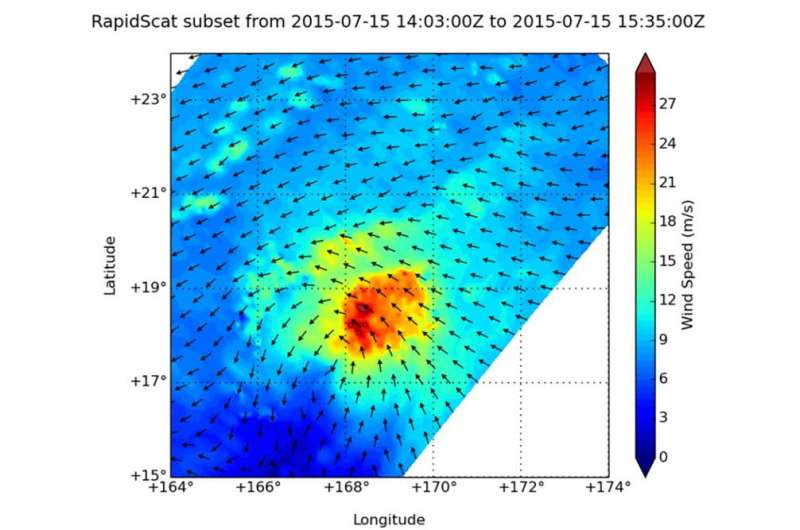NASA's RapidScat sees Tropical Storm Halola's concentrated winds

The strongest sustained winds in the northwestern Pacific Ocean's Tropical Storm Halola were located in the northeastern quadrant of the storm according to NASA's RapidScat instrument that flies aboard the International Space Station.
RapidScat gathered wind data on Halola on July 15 between 14:03 and 15:35 UTC (10:03 and 11:35 a.m. EDT). The data showed the strongest winds in the system were in the northeastern quadrant at a speed up to 28 meters per second (62.6 mph/100.8 kph). Winds on the other sides of the storm appeared less than 12 meters per second (26.8 mph/43.2 kph), and the southwestern quadrant had the weakest winds. RapidScat also showed the system had become elongated from southwest to northeast. That's because the storm is being battered by southwesterly wind shear. Those winds from the southwest are also pushing all the clouds and showers to the northeastern quadrant.
The Joint Typhoon Warning Center (JTWC) noted that Halola's maximum sustained winds were near 55 knots (63.2 mph/102 kph) on July 16, 2015 at 1500 UTC (11 a.m. EDT). It was centered near 18.6 North latitude and 163.5 East longitude, about 148 nautical miles west-southwest of Wake Island. Halola was moving to the west-southwest at 9 knots (10.3 mph/16.6 kph).
Halola is expected to strengthen into a typhoon by July 17 as it moves into a better environment and vertical wind shear eases. It is then forecast to continue on a west-northwesterly track through the Pacific Ocean. Halola is expected to pass northeast of Iwo To island, Japan, by July 21.
Provided by NASA's Goddard Space Flight Center





















